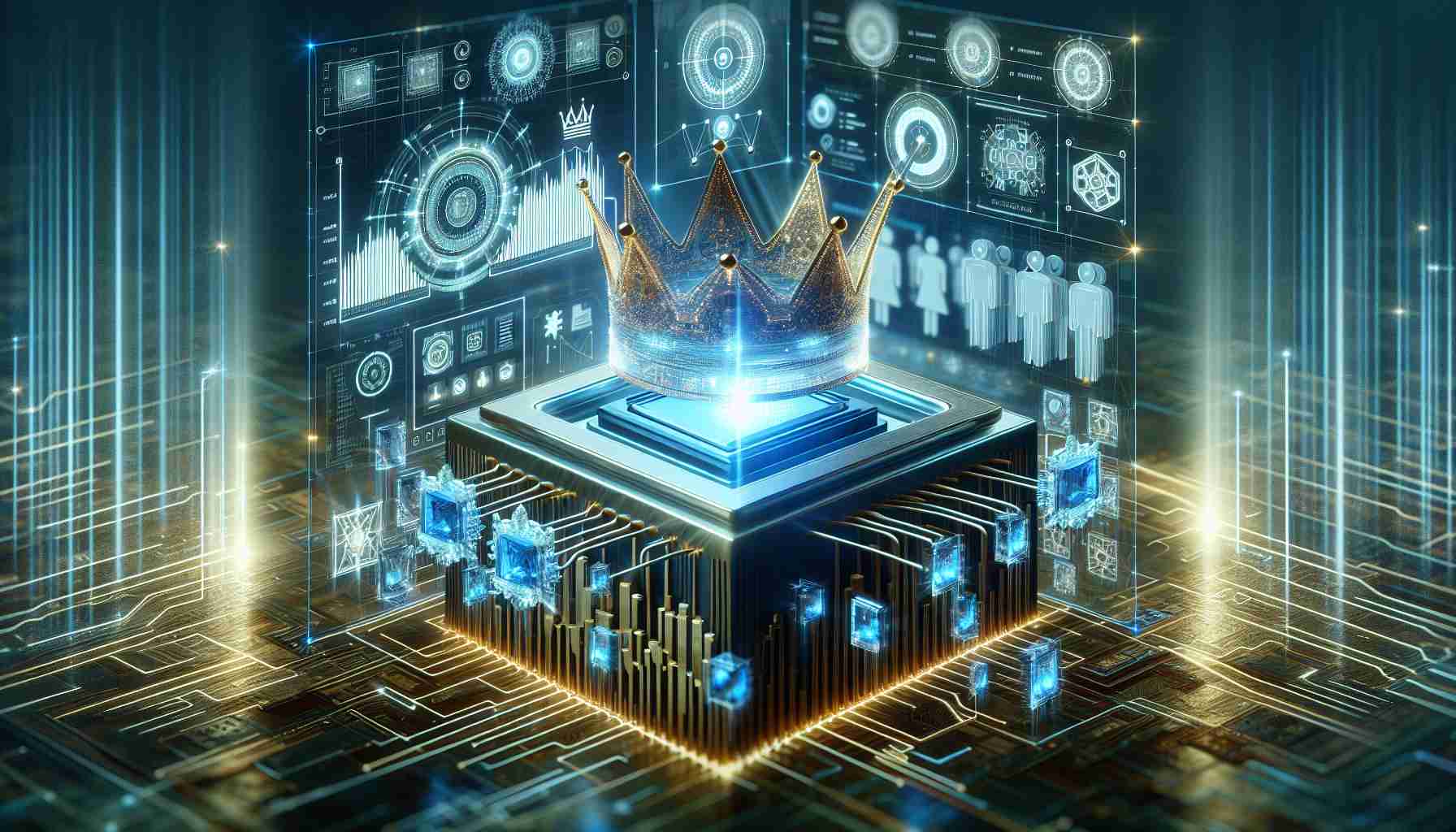In a rapidly advancing technological landscape, chip manufacturers are seeing remarkable growth, largely fueled by artificial intelligence (AI) advancements. According to World Semiconductor Trade Statistics (WSTS), the global semiconductor industry is projected to hit $611 billion in revenue this year, marking a 16% increase from the previous year. This momentum is anticipated to maintain strength into 2025, with an expected 12.5% rise in revenue.
AI has emerged as a critical catalyst for this boom, catalyzing the need for a myriad of chips—from specialized processors to memory solutions. Industry giants Nvidia and Micron Technology have emerged as top beneficiaries in this booming sector. Nvidia’s stronghold in AI graphics processing units (GPUs) has led to substantial revenue and earnings growth. The company’s stock has surged by 193% this year, reflecting its market dominance.
Micron Technology is also riding the AI wave, albeit at a more modest pace compared to Nvidia. The memory giant reported a 61% increase in revenue to $25.1 billion in fiscal 2024, illustrating a significant turnaround from previous losses. The surge in demand for Micron’s memory chips, essential for AI GPUs, is expected to propel further growth.
For Nvidia, the demand for data center GPUs continues to rise, backed by forecasts indicating a 55% increase in shipments, driven by new product launches. Micron’s outlook also remains positive, with the DRAM market projected to grow by 51% next year, contributing to Micron’s optimistic revenue forecasts.
Overall, both companies are well-positioned for future gains, making them attractive candidates for investors eyeing the AI revolution in the semiconductor industry.
The Surging Wave of AI Chips: Behind The Scenes Impact
In the current wave of technological transformation, the importance of semiconductors, particularly those driven by Artificial Intelligence (AI), extends far beyond their economic impact. These unassuming chips are quietly reshaping the social fabric of communities, influencing global power dynamics, and altering the trajectory of emerging technologies. But what does this mean for everyday life and the broader global context?
The advent of AI-driven chips has not just enhanced computing capabilities but has brought about tangible changes in numerous sectors, including healthcare, transportation, and education. Healthcare has witnessed revolutionary strides with AI-powered diagnostic tools and personalized medicine, driven heavily by advanced semiconductors. Real-time data processing allows for quicker diagnosis and more personalized treatment plans, offering hope for early detection and treatment of diseases like cancer and neurological disorders.
In transportation, autonomous vehicles rely heavily on processing power, which AI chips efficiently provide. These innovations hint at a future of reduced traffic congestion and fewer accidents, largely thanks to AI-enhanced decision-making capabilities embedded within these systems.
Educational landscapes are also shifting as AI chips power interactive learning environments, enabling personalized learning experiences that cater to diverse learning styles. Students across the globe now have access to tools that not only make learning more engaging but are also adaptable to varying educational needs.
The Broader Impact: Society and Economy
The accelerated development of semiconductor technologies presents both opportunities and challenges. While companies like Nvidia and Micron reap benefits, society faces contentious debates over employment, privacy, and technological dependency.
Advantages:
1. Economic Growth: Chip advancements contribute significantly to the GDP of producing countries, providing jobs, and fostering technological ecosystems.
2. Technological Advancement: Countries with strong semiconductor industries are seen as leaders in the global digital economy.
Disadvantages:
1. Job Displacement: Automation fueled by AI chips leads to job displacement in traditional sectors, creating a demand for new skills and job types.
2. Privacy Concerns: With AI’s ability to analyze massive data sets efficiently, privacy concerns mount, urging stricter regulations.
Controversy: A Double-edged Sword
While these chips fuel growth, they also bring about ethical and geopolitical concerns. Governments grapple with the challenge of regulating technology that evolves quicker than legislation can adapt. The reliance on a few companies for critical technology components raises questions about monopolistic practices and national security.
Who Controls the Market?
The semiconductor industry is often under scrutiny for its potential to create monopolies and exacerbate geopolitical tensions, especially in regions heavily reliant on imported technology. The dominance of a few players like Nvidia and Micron can lead to unequal global technological access.
What Does the Future Hold?
The future will likely see an intensified role of international alliances and policies focused on securing semiconductor supply chains and fostering competitive market landscapes.
For those interested in the intricacies of this ever-evolving industry, explore more at Nvidia and Micron Technology.
In conclusion, as AI chips continue to drive progress, they simultaneously beckon societies to contemplate their broader implications. How we balance technological advancement with ethical considerations will define the coming age of innovation.






















